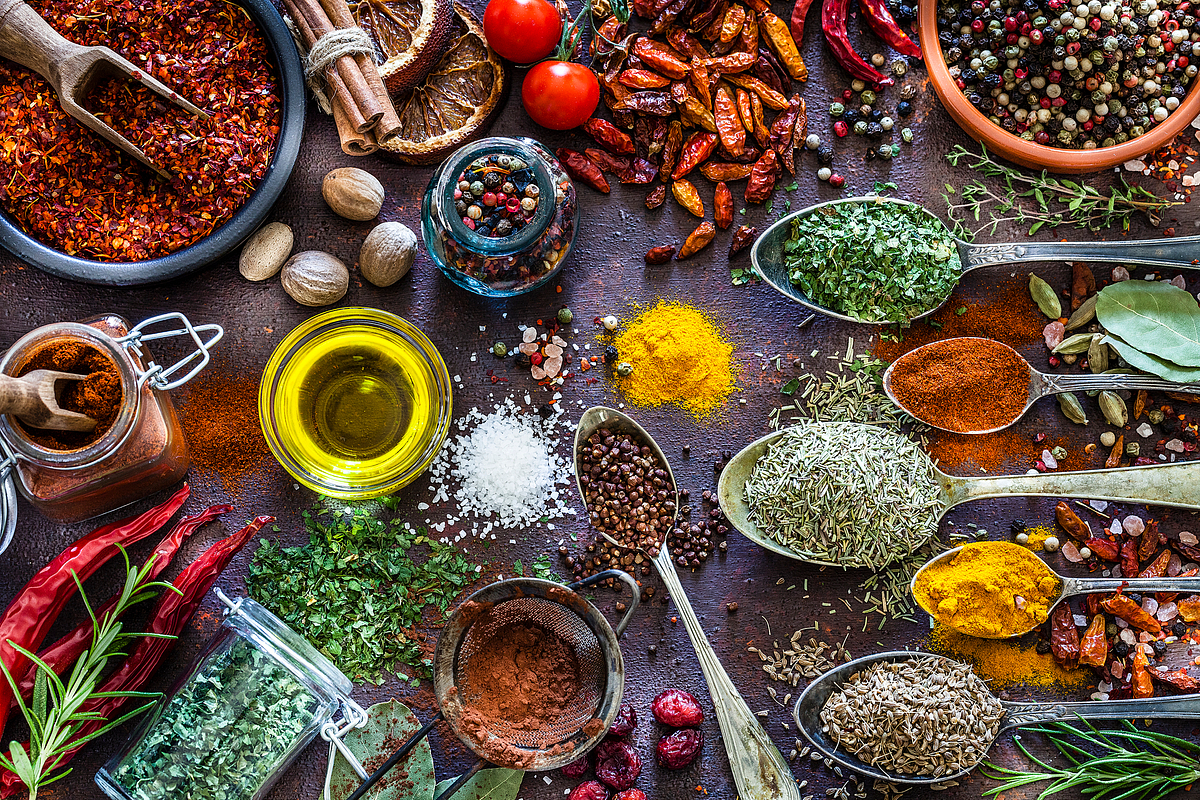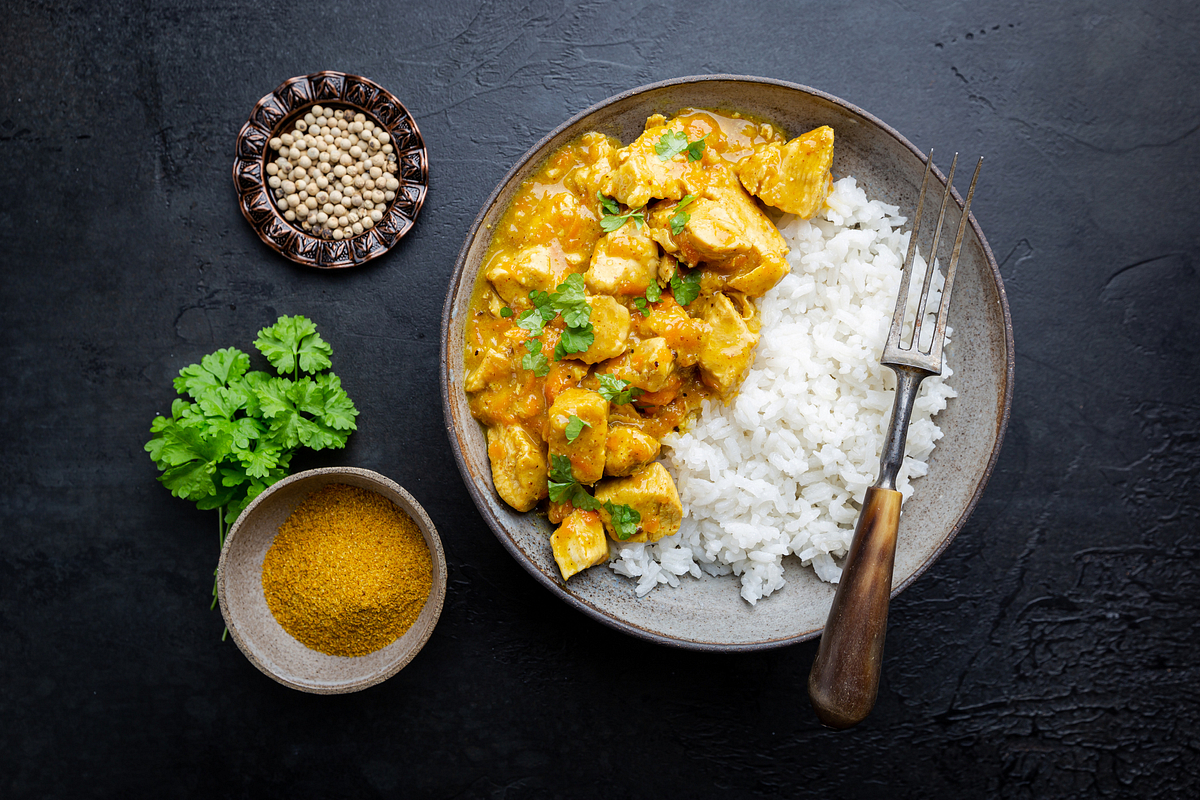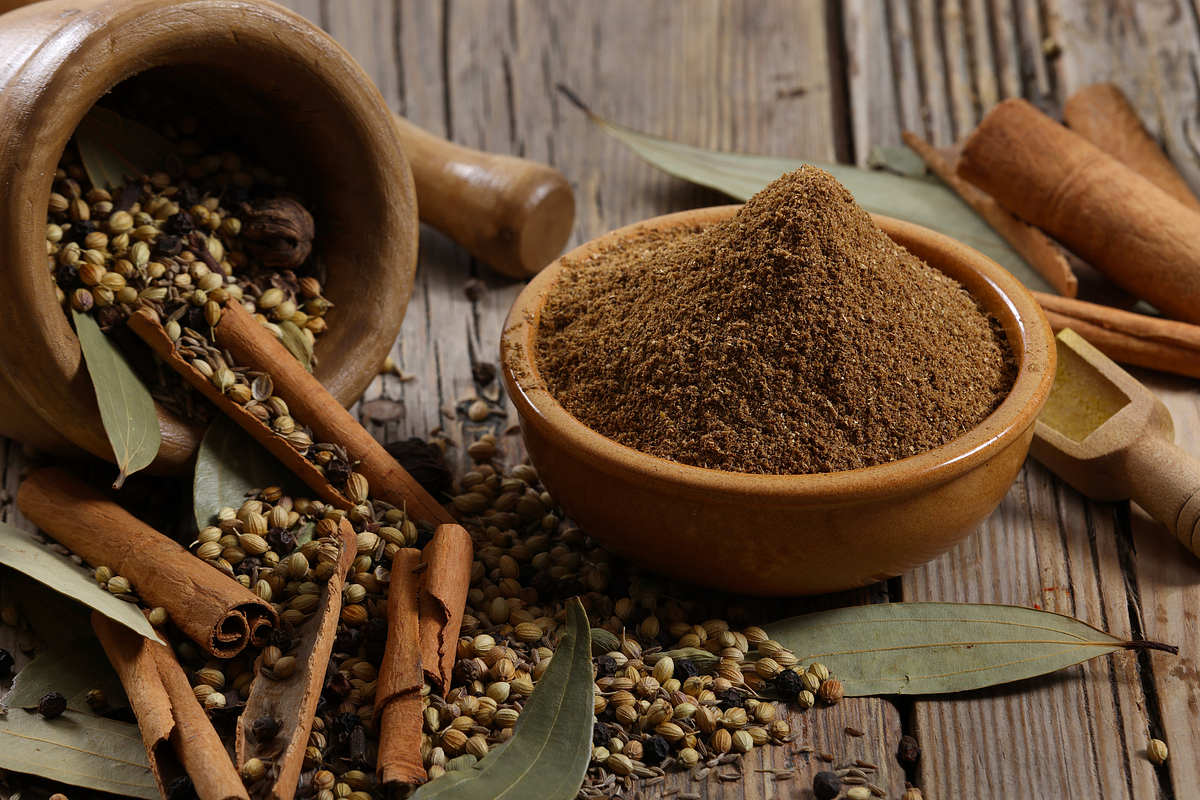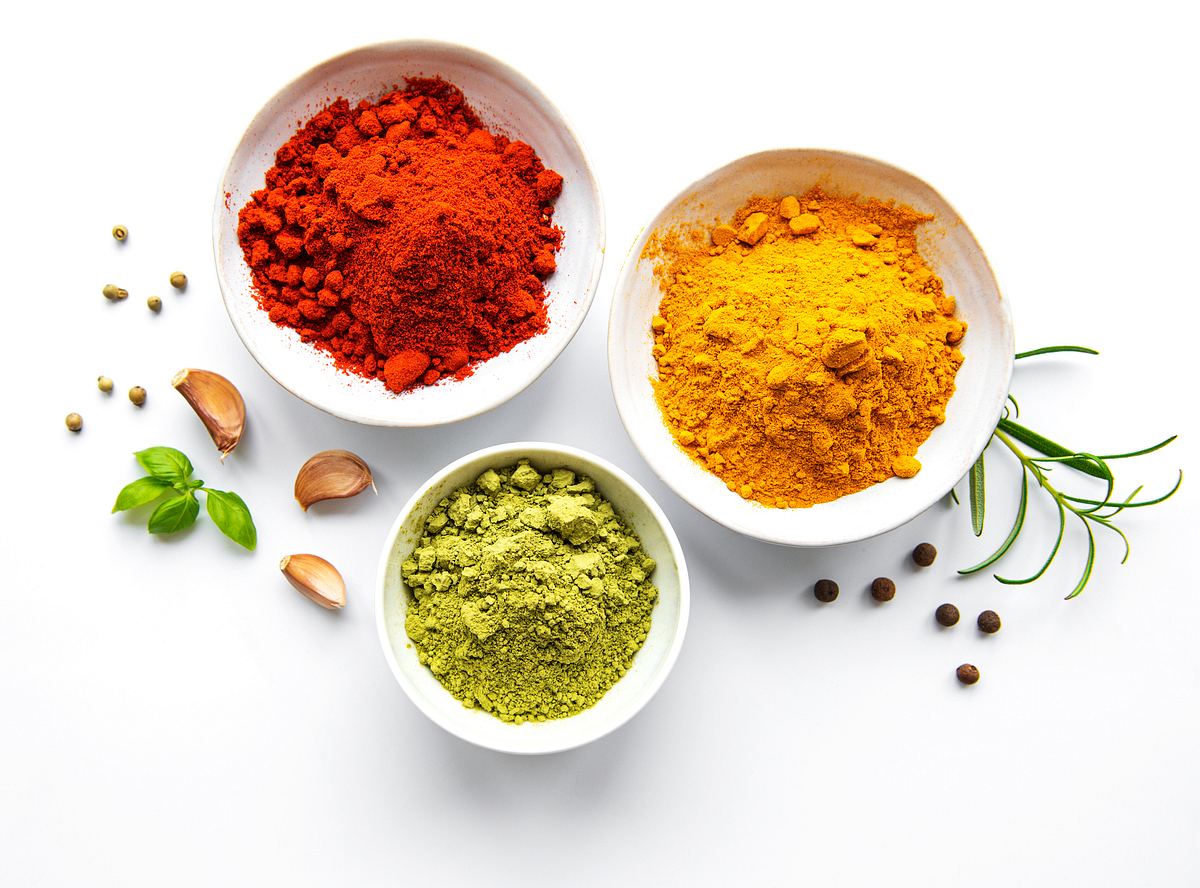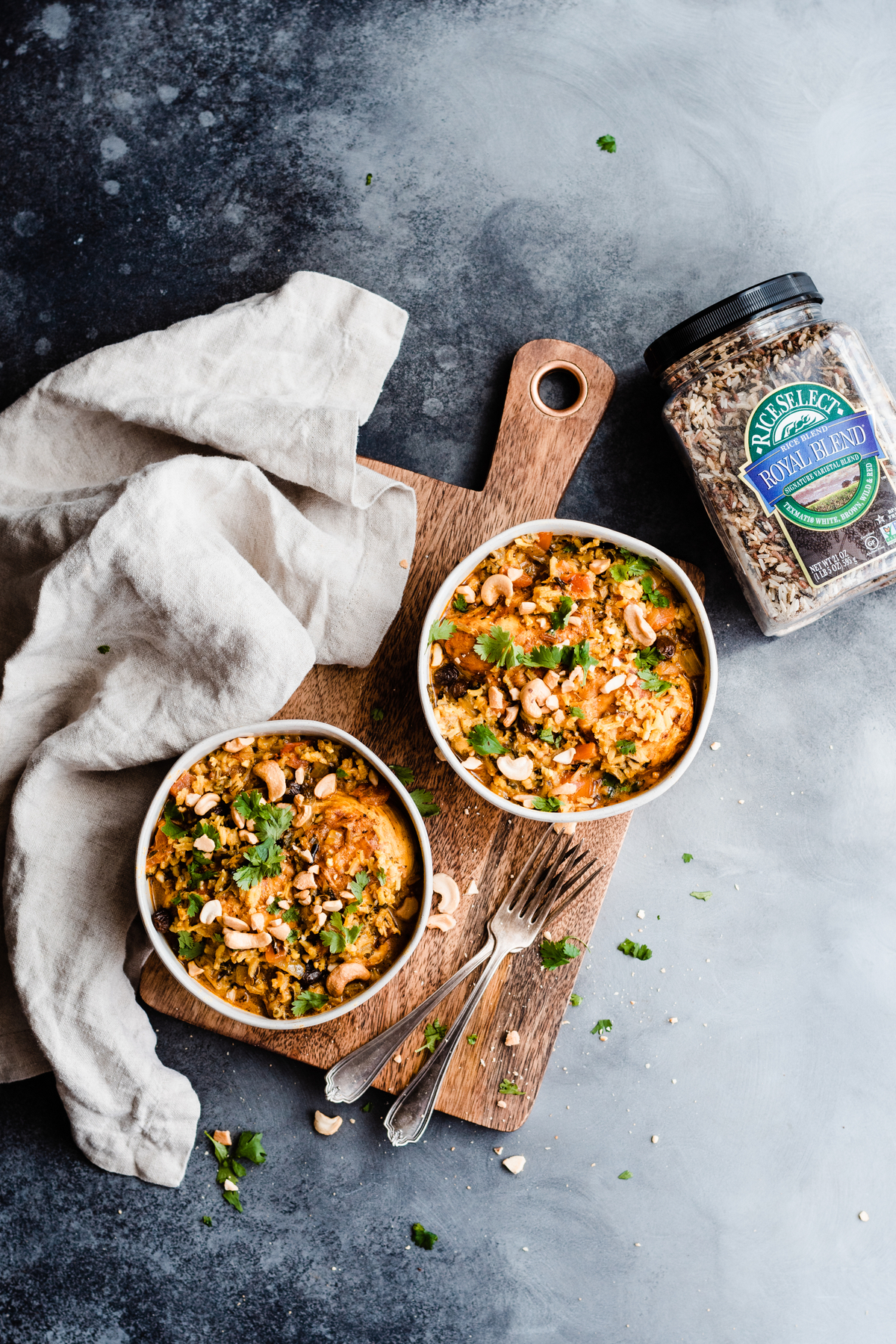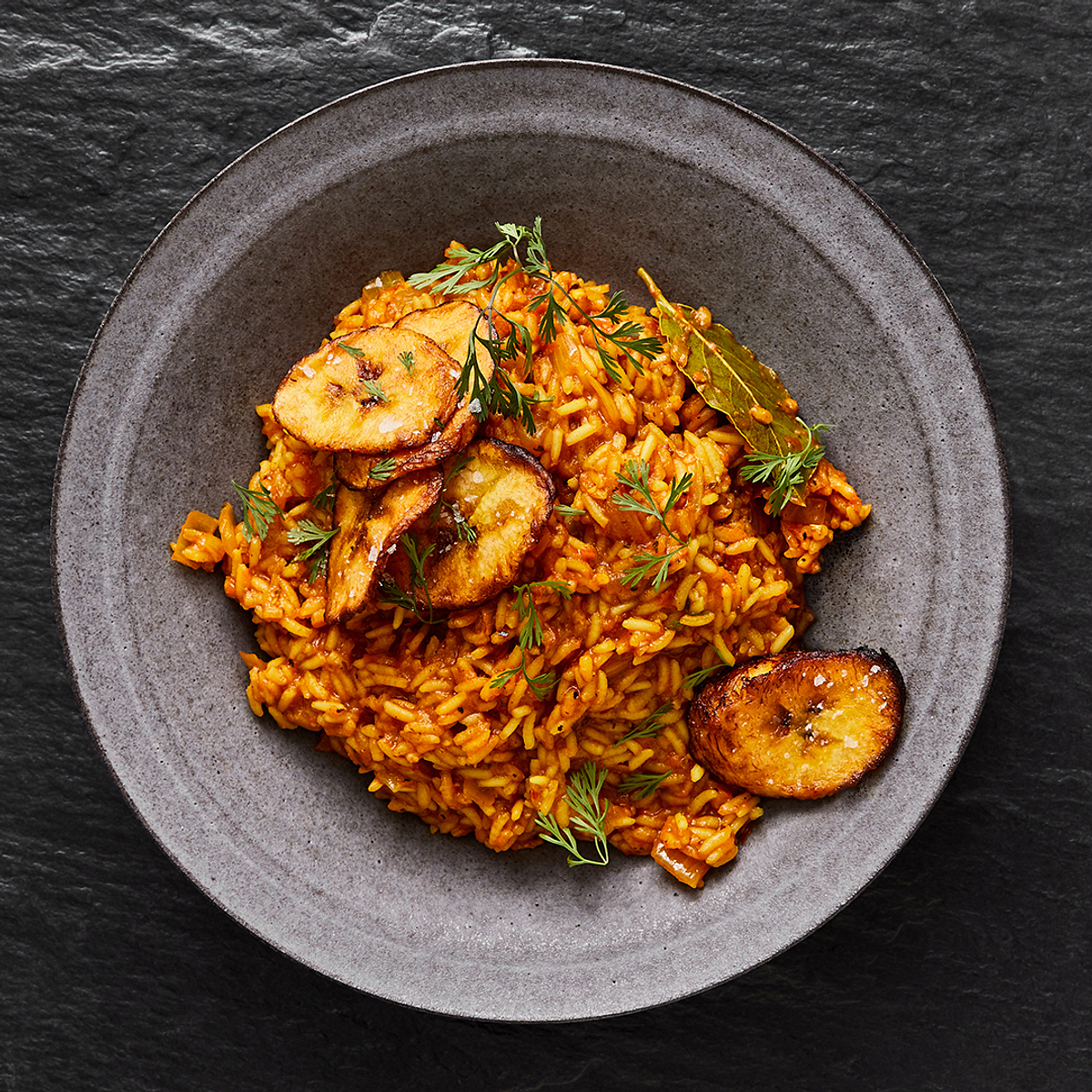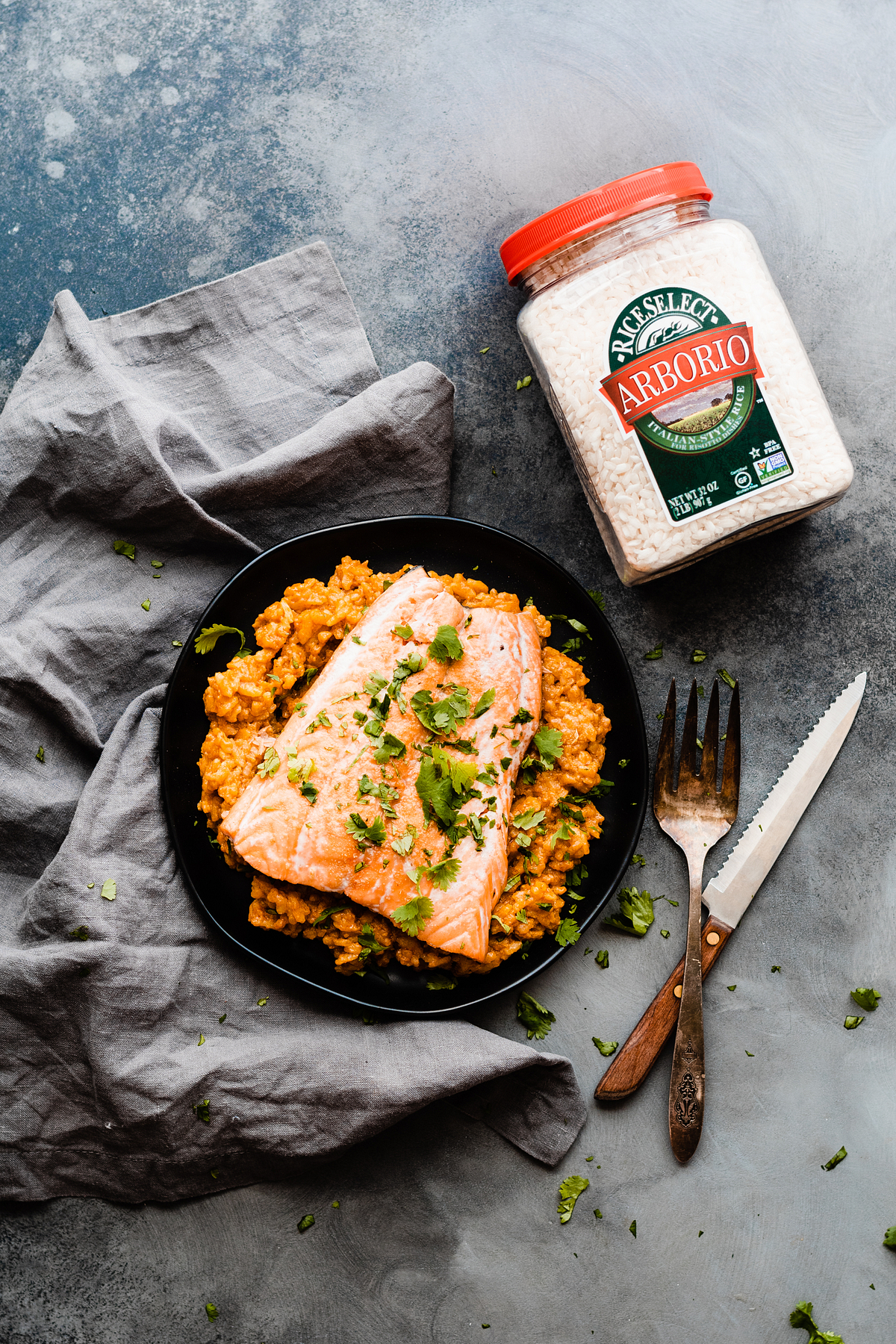In order to master all kinds of recipes in the kitchen, a true home chef should know their way around a wide variety of spices and herbs. Understanding the power of seasoning in recipes starting with a marinade, in a skillet or in a sauce is key for incredible and unforgettable meals.
Beginning with one of my absolute favorites, curry may seem straightforward, but it has a complex history and nowadays encompasses much more than a spice on your shelf, and has also sparked a bit of controversy. Come with me to unpack curry with a few of my favorite recipe ideas along the way.
What is Curry?
While the generic term curry might be a bit misleading, I’m going to explore curry in three of its most commonly used terms: as a dish, as a spice blend and as a paste.
And, one important note is that curries were never supposed to be eaten alone, but rather served alongside a steaming bed of rice. So, with each of the recipe ideas I share, I will also share my choice of rice to use from my favorite fragrant basmati variety, Texmati®, all the way to Premium Black Rice.
Curry Is a Dish
Steeped in history, the term curry originated from the Tamil word kahri meaning sauce with a gravy-like consistency enjoyed with rice. Today, one definition of curry refers to a seasoned dish. While many may associate these dishes with a certain level of spiciness, this is largely due to European explorers who brought hot peppers to the Indian subcontinent rather than traditional preparations. So, curry dishes may not always be spicy.
Curry Powder Is a Spice Blend
If you’re like me, you most likely always have an orange-hued bottle of curry powder in your pantry, but many might be surprised to find out that it is actually a blend of spices rather than one ground spice.
And, historically speaking, curry powder is fairly new and arose out of Britain in the 18th century rather than India, or any surrounding countries. In fact, contrary to common belief, curry powder does not actually exist in the Indian subcontinent at all. The confusion is due to British colonial government officials who brought back with them a concoction of spices, similar to garam masala, meaning warming spices in the Hindi language.
What is the Difference Between Curry Powder and Garam Masala?
As stated above, garam masala is used in Indian cooking while curry powder, as we know it in the Western world, is a British invention. Other more detailed differences are that garam masala is a stronger blend of flavor with a sweet touch from toasted spices. Whenever I make a homemade version, I include cardamom, cumin, cinnamon, fennel, star anise, bay leaves and mace among many others.
Curry powder on the other hand is milder and has that characteristic orange hue from turmeric, cardamom, dry mustard, coriander and cayenne pepper to name a few.
As these spice blends are so different, there are many recipes that call for them both like in this Chicken Biryani recipe made with Texmati® White Rice. Note: This rice variety has all the same amazing texture and taste of traditional basmati but it is produced in the United States.
Curry is a Paste
While it may often only be associated with Indian cuisine, curry made into a paste is a thick blend of vegetables and herbs primarily used in Thai cuisine. It turns out that, while there is no clear evidence, many people in Thailand affirm that their curries are original and not influenced by India. However, many historians believe that during the time of European explorers and colonization, there may have been indirect influence from trade routes.
In contrast to Thai curry pastes, there are also Indian curry pastes that exist.
Difference Between Thai Curry Paste and Indian Curry Paste?
Indian curry paste almost always begins with mashed garlic and ginger with the addition of roasted onion and tomato along with spices like turmeric powder, ground cumin and coriander, red chili or cayenne pepper powder and garam masala.
Prepare your own, or enjoy a store-bought variety of Indian curry paste in this recipe for Indian Royal Blend Chicken Biryani made with Royal Blend® Texmati® White, Brown, Wild & Red Rice for an incredible meal filled with flavor and texture.
Thai curry paste, on the other hand, is quite different made with shrimp paste, lemongrass, onions, cilantro and chiles of varying spice levels. Specifically, there are three different Thai curries that range in color including red, green and yellow due to the ingredients that are used.
Thai red curry paste is the spiciest made with red chile peppers and is often part of dishes like a Panang Chicken Curry made with underlying notes of peanut and coconut for a balance of both salty and sweet with kaffir lime citrus. For truly authentic results, I love to pair this dish with fluffy and aromatic Kamalis™ Jasmine Rice, exclusive to RiceSelect®.
Thai green curry paste is slightly milder, made with green peppers and herbs, however it still offers a kick. One of my favorite ways to use this version is a Thai Green Vegetable Curry. The vegetables are sautéed in a blend of curry paste, garlic, tamari, lime juice, ginger and brown sugar with coconut milk and broth for a delicious rich and creamy taste served over Premium Black Rice.
Thai yellow curry paste is the mildest commonly made up of yellow chilies, lemongrass, galangal, fish sauce, and spices including turmeric. If you prefer a mild version, either of the recipes above can be made with this variety.
Differences Between Northern and Southern Indian Curry
Even within the same country there are often distinguishing factors for curry dishes. I’ve included some of the major differences between Indian curry and those of neighboring countries.
Northern India: These tend to use garam masala with fenugreek for dishes along with cottage cheese and yogurt incorporated. Typical meals include rogan josh or palak paneer.
Southern India: These include many stews with rice and lentils. Here coconut milk is more commonly introduced along with the fruit tamarind. For a bit of similar flavor, try this Lentil and Turmeric Couscous Stew using coriander, cumin and cayenne pepper.
Cambodia and Thailand: With similarities to southern India, these varieties also use coconut milk with lime, lemongrass and Thai curry paste.
When I can’t decide where to base my curry, I use an innovative blend of everything. This Sweet and Sour Pork Belly dish is one of those dishes bursting with flavor.
It starts with a base of garlic and ginger typical of Indian curries along with both masala curry powder and garam masala. It incorporates a bit of Thai flavor as well with red curry paste, lemongrass, tamarind, soy sauce and a dash of fish sauce for an incredible umami flavor.
International Recipes with Curry Powder
Curry, in all its varieties, is continuously making its way around the world and is found incorporated into international dishes from Italian cuisine all the way to the Caribbean. The intersection of cultures from around the world and this generic term is a fascinating and tremendous history lesson. Although typically prepared with rice you can also make it with Pearl Couscous recipes or Orzo pasta. For more information on cooking Orzo, visit our website.
I’ll show you some of the best I’ve found with recipes using different RiceSelect® varieties.
Indonesia
While it may not be technically part of the Indian subcontinent, it’s hard to deny the influence of curry in all of its varieties in Indonesian cuisine. Different from other countries, Indonesian curry dishes may often include nutmeg, cloves and cinnamon with a creamy texture from coconut milk and ground cashews or macadamia nuts. It is also not uncommon to find a bit of soy sauce in recipes.
The use of curry powder and ginger has even extended to other national dishes like this Black Rice Nasi Goreng.
The Caribbean
With British colonialism came an exchange of goods such as spices. Whether it be from British generals, slaves or indentured servants from the East, curry was so commonly used during the 18th century that it is now a staple part of many dishes throughout the Caribbean.
Using other ingredient combinations, try your hand at an incredible combination of flavors, including curry, in this Instant Pot Caribbean Rice and Beans with Grilled Jerk Eggplant. For delicious results, I use Texmati® White Rice for its fragrant taste and light and fluffy texture alongside hearty beans and marinated eggplant.
Africa
Another interesting twist to the history of curry powder, is that it is often found in African cuisine such as Jollof Rice. However, even though different curry dishes may have been brought to Africa through Indian migration, the presence of curry powder appears to be influenced by Caribbean cuisine. In fact, many authentic African recipes from Nigerian and Ghana call for Caribbean curry powder.
Italy
A delicious Western combination, curry in all its varieties is found in many classic recipes as a way to enhance the flavor and bring an innovative touch to dishes we all know and love.
Take this Curry Risotto Bake Salmon for example using rich and creamy Arborio Rice infused with coconut milk and spices all topped with baked flaky salmon.
With so many options available, what curry dish will you be making next? I’m already getting excited for my next creation. Share yours with me on social media by tagging @RiceSelect.
Check the website for even more recipes, like this shrimp rice salad.

